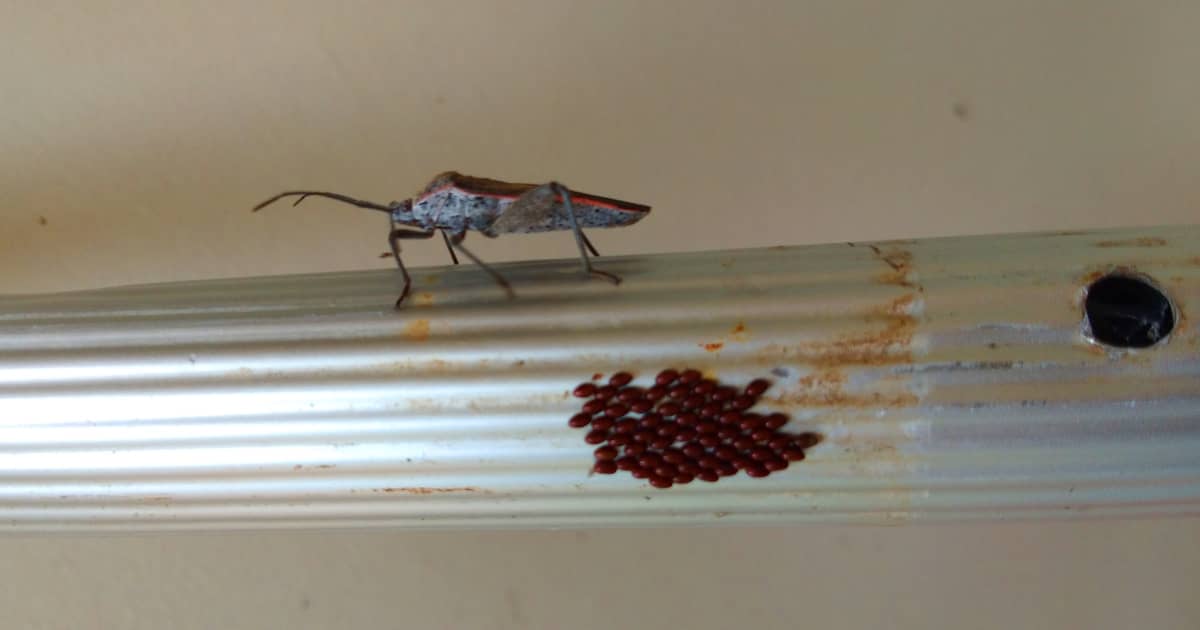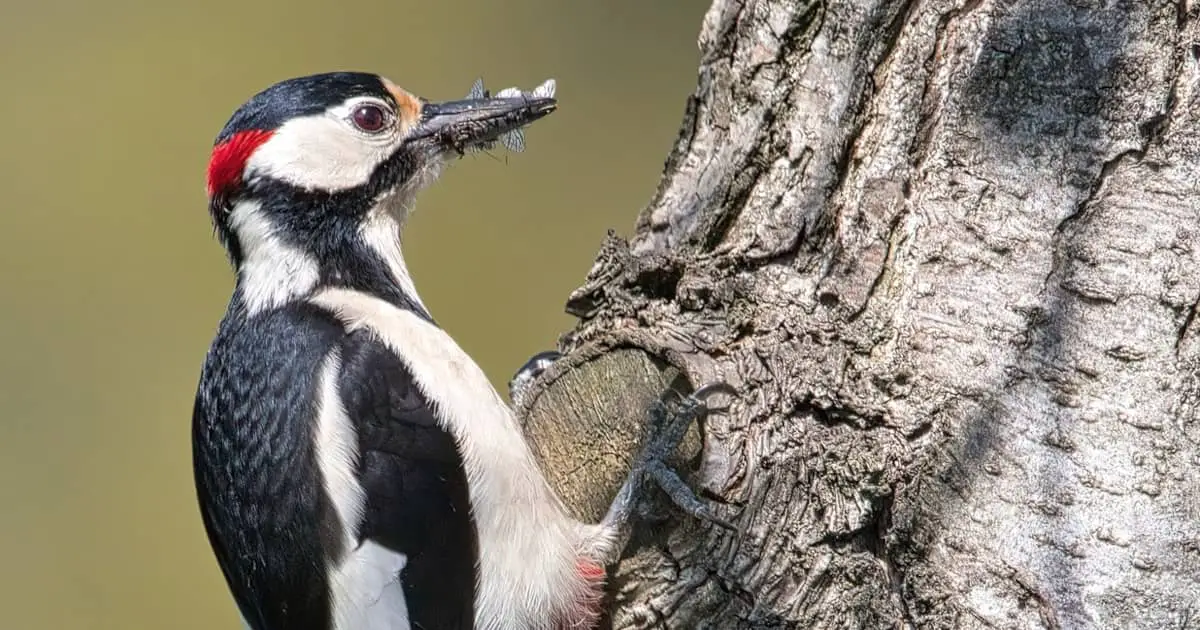Have you seen stink bugs lately near your home? Discover how to identify and control stink bug infestations in your home. Learn about the life cycle of stink bugs and the stages of development they go through before becoming reproductive adults.
Find out five natural ways to control stink bug populations near your home and discover preventive measures to avoid infestations. Don’t miss out on this informative read that highlights the importance of stink bugs in natural ecosystems.
Table of Contents
Introduction
Stinkbugs are fascinating creatures that play a positive role in the environment. They are part of the Hemiptera order and are known for their distinct shield-shaped bodies. These insects are typically brown or green in color, with a characteristic foul odor that gives them their name.
I have found a brown stink bug at home together with its eggs, presumably, because it stayed there next to a neatly arranged line of eggs (Figure 1) stuck on an old aluminum handle of a mop. It’s my first time to see such eggs.

Given the presence of the mother stink bug, I got to know they’re stink bug eggs. Even bugs have motherly instinct as it stayed there the whole time I examined the clump. I dare not crush it as surely it will emit a pungent, unpleasant smell.
Aside from the pungent smell, how will it defend its eggs against intruders? That’s something I was not able to verify as it stood motionless even with me manipulating the handle.
While stinkbugs may have their place in nature, they can quickly become a nuisance when they invade our homes. These pests are attracted to warmth and light, making residential areas an ideal habitat for them. Once inside, they can cause damage to crops, gardens, and even household items.
Stinkbugs are particularly problematic for farmers, as they feed on a wide range of crops, including fruits, vegetables, and grains. Their feeding habits can lead to significant economic losses and reduced crop yields.
In addition to their destructive feeding habits, stinkbugs also emit a pungent odor when threatened or crushed. This odor can be quite unpleasant and can linger in the air for a long time.
While stinkbugs may have their place in the ecosystem, it’s important to take measures to control their population and prevent infestations in our homes.
In the following sections, we will explore the life cycle of stink bugs, natural ways to control their proliferation, and preventive measures to avoid infestations. By understanding these aspects, we can effectively manage stinkbug populations and protect our homes and crops.
Life Cycle of Stink Bugs
The life cycle of stink bugs consists of several stages of development. Understanding these stages is crucial for effectively managing stink bug populations.
Egg Stage
The first stage is the egg stage. Female stink bugs lay clusters of eggs on the underside of leaves or other surfaces. These eggs are usually barrel-shaped but some look like grains (Figure 1) and can vary in color depending on the species. The eggs typically hatch within 4 to 5 days, although this can vary depending on environmental conditions.
Nymph Stage
Once the eggs hatch, the nymph stage begins. Nymphs resemble smaller versions of adult stink bugs but lack fully developed wings. They go through several molts, shedding their exoskeletons as they grow. The nymph stage lasts for about 4 to 5 weeks, during which the stink bugs undergo significant growth and development.
Adult
After the nymph stage, stink bugs reach adulthood. Adult stink bugs have fully developed wings and reproductive capabilities. The time it takes for stink bugs to reach adulthood varies depending on the species and environmental conditions, but it typically ranges from 4 to 6 weeks.
It’s important to note that stink bugs can reproduce multiple times throughout their lifespan, with females capable of laying hundreds of eggs. This rapid reproductive cycle contributes to the population growth of stink bugs and the potential for infestations.
Natural Ways to Control the Proliferation of Stink Bugs Next to Homes
Controlling stink bug populations naturally can help prevent infestations near your home. Here are five effective methods to consider:
1. Planting Trap Crops
Stink bugs are attracted to certain plants, such as sunflowers and tomatoes. By planting these trap crops away from your home, you can lure stink bugs away from your property. Regularly inspect and remove the infested plants to prevent the bugs from returning.
2. Using Insecticidal Soap
Insecticidal soap is a safe and effective way to control stink bugs. It works by suffocating the bugs upon contact. Dilute the soap according to the instructions and spray it directly on the stink bugs. Be sure to target the undersides of leaves and other hiding spots.
3. Vacuuming
A simple yet effective method is to vacuum stink bugs. Use a handheld vacuum with a long attachment to reach high areas. Empty the vacuum bag or container immediately after use to prevent the bugs from escaping.
4. Sealing Entry Points
Stink bugs can enter your home through small cracks and gaps. Inspect your windows, doors, and foundation for any openings and seal them with caulk or weatherstripping. This will prevent stink bugs from entering your living spaces.
5. Natural Predators
Encouraging natural predators, such as birds and spiders, can help control stink bug populations. Provide birdhouses and bird feeders to attract birds to your yard.

Additionally, avoid using pesticides that may harm these beneficial predators. By implementing these natural methods, you can effectively control the proliferation of stink bugs near your home without relying on harmful chemicals.
Preventive Measures to Avoid Stink Bug Infestation
Stink bugs can be a nuisance when they infest areas near your house. However, there are several natural preventive measures you can take to keep these pests at bay.
1. Remove Attractants
Stink bugs are attracted to certain plants and fruits, such as apples and peaches. By promptly picking up fallen fruits and regularly pruning plants, you can eliminate potential food sources for stink bugs and discourage them from congregating near your home.
2. Maintain Cleanliness
Stink bugs are attracted to cluttered and unkempt areas. Keep your yard and garden tidy by regularly removing debris, such as piles of leaves or wood. This will reduce potential hiding spots for stink bugs and make your property less appealing to them.
3. Install Window Screens
Stink bugs often enter homes through open windows and doors. Installing window screens can act as a physical barrier, preventing stink bugs from gaining access to your living spaces. Make sure the screens are in good condition and free from any holes or tears.
4. Seal Cracks and Gaps
Stink bugs can squeeze through tiny openings in your home’s exterior. Inspect your walls, windows, and doors for any cracks or gaps and seal them with caulk or weatherstripping. This will help prevent stink bugs from finding their way inside.
By implementing these preventive measures, you can significantly reduce the risk of stink bug infestation near your home. Remember to stay vigilant and address any signs of stink bug activity promptly to prevent a full-blown infestation.
Conclusion
In conclusion, stink bugs play a significant role in natural ecosystems. While they may be considered a nuisance when they infest areas near our homes, it’s important to remember that they serve a purpose in the environment. Stink bugs are part of the natural food chain, providing a food source for other organisms such as birds and reptiles. They also help to control populations of certain plant pests.
However, when stink bugs become a problem in residential areas, it’s crucial to take action to prevent infestations. By implementing the preventive measures discussed in this article, such as removing attractants, maintaining cleanliness, installing window screens, and sealing cracks and gaps, homeowners can significantly reduce the risk of stink bug infestation.
It’s important to stay vigilant and address any signs of stink bug activity promptly to prevent a full-blown infestation. By doing so, we can maintain a balance between the natural ecosystem and our living spaces.
While stink bugs may be a nuisance, they are an integral part of the natural world. By understanding their life cycle, implementing preventive measures, and taking prompt action, when necessary, we can coexist with these insects while keeping them at bay from our homes.


